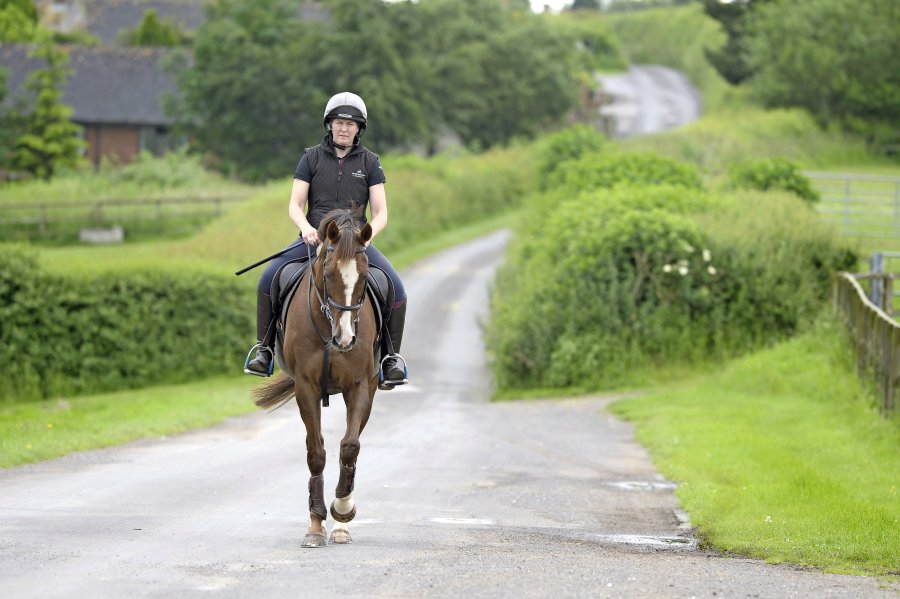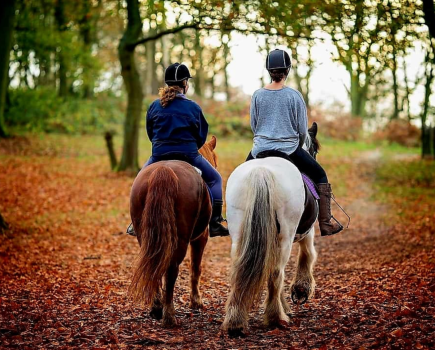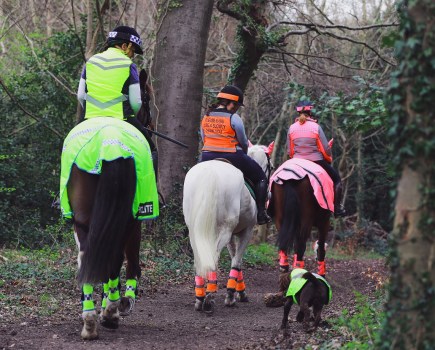In our final part of our retraining ex-racehorses series, Sue Jannaway takes us through the right aids to use on a ex-racer and how to go about hacking him out.
Retraining on the correct way of going takes time, as racehorses are not used to working in an outline
Often riders air on the edge of caution when first using leg aids on a ex-racehorse, in the fear that he overreacts and run forwards.
“Its important that he understands what you want and you shouldn’t be frightened to squeeze with your leg and ask him to move across, slow down or move forwards,” says Sue.
An ex-racehorse’s under neck sternocephalicus muscle is usually well-developed and their topline weak as they haven’t been working in an outline.
“Don’t be tempted to force them into an outline, as they will soften in time,” says Sue.
“Use either a set of bungee reins, a Market Harborough or draw reins to help them understand the way we want them to work.”
This is a gradual process and the working on balance and bend should be priority over outline
“We work most of our ex-racehorses in a simple snaffle, as they have light mouths, but some do prefer alternative bits like one of our horses called Frank, who works in a gag,” says Sue.
Could it be you?
However, more often than not it’s not the bit that causes an issue, but the riders actions.
“When a rider shortens the reins, they tip forward, which says to an ex-racehorse to move quicker, so its key to try and think how they think so you can anticipate their reaction.”
Often ex-racers run into the canter than respond to your leg aids
Racehorses have learnt to go from a standstill in the stalls to gallop, so re-educating them to steadily trot and go forward to canter takes time.
“Initially, ex-racers tend to rush the trot to strike canter like a youngster,” says Sue.
“Be patient and slow the trot down so they’re balanced, and ask for canter in the corner by giving a definite leg aid.”
Taking an ex-racehorse hacking
When out hacking, it’s advisable not to gallop as it contradicts the retraining process.
“We tend to use walk, trot and then eventually introduce canter on grass, so that they learn it needs to be controlled,” says Sue.
“It’s essential that we know what each ex-racehorse can and can’t do before rehoming.”
Some ex-racehorses are happy to hack alone while others require company
Racehorses, when in training, spend a lot of time strengthening their tendons with roadwork, but this is often as a string of horses, not alone.
“Initially we’ll ride out with another horse so they’re comfortable with the route, before we would try to hack them alone,” says Sue.
“Even though most are good in traffic we always work around vehicles on the yard first, before tackling public roads.”
Road work and hacking can help ex-racers relax and should be included in their retraining.
“After a 20 minute schooling session, we like to walk them out down the road, not only to cool them off, but to help their minds switch off,” says Sue.
If you get to a point in the retraining process where you feel progress is slow or you’re starting to face challenges, don’t feel like you’re on your own and seek advice.
There’re plenty of instructors, and organisations like HEROS who are prepared to offer support and tips.









